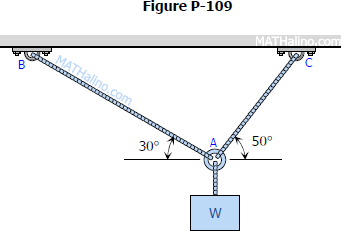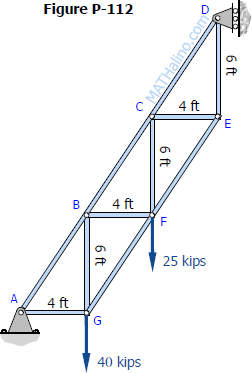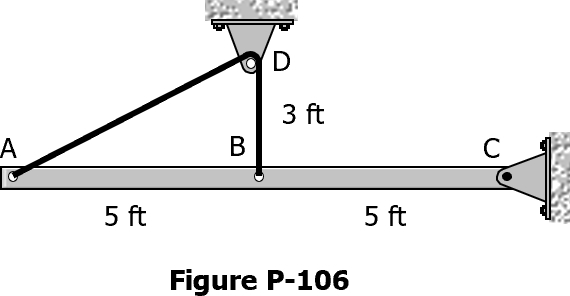Solution to Problem 125 Bearing Stress
Contents
Problem 125
In Fig. 1-12, assume that a 20-mm-diameter rivet joins the plates that are each 110 mm wide. The allowable stresses are 120 MPa for bearing in the plate material and 60 MPa for shearing of rivet. Determine (a) the minimum thickness of each plate; and (b) the largest average tensile stress in the plates.
- Read more about Solution to Problem 125 Bearing Stress
- Log in to post comments
Normal Stresses
Stress is defined as the strength of a material per unit area or unit strength. It is the force on a member divided by area, which carries the force, formerly express in psi, now in N/mm2 or MPa.
where P is the applied normal load in Newton and A is the area in mm2. The maximum stress in tension or compression occurs over a section normal to the load.
- Read more about Normal Stresses
- Log in to post comments
Solution to Problem 114 Normal Stress
Problem 114
The homogeneous bar ABCD shown in Fig. P-114 is supported by a cable that runs from A to B around the smooth peg at E, a vertical cable at C, and a smooth inclined surface at D. Determine the mass of the heaviest bar that can be supported if the stress in each cable is limited to 100 MPa. The area of the cable AB is 250 mm2 and that of the cable at C is 300 mm2.
- Read more about Solution to Problem 114 Normal Stress
- Log in to post comments
Solution to Problem 113 Normal Stress
Problem 113
Find the stresses in members BC, BD, and CF for the truss shown in Fig. P-113. Indicate the tension or compression. The cross sectional area of each member is 1600 mm2.
- Read more about Solution to Problem 113 Normal Stress
- Log in to post comments
Solution to Problem 111 Normal Stress
Problem 111
For the truss shown in Fig. P-111, calculate the stresses in members CE, DE, and DF. The cross-sectional area of each member is 1.8 in2. Indicate tension (T) or compression (C).
- Read more about Solution to Problem 111 Normal Stress
- Log in to post comments
Solution to Problem 109 Normal Stress
Problem 109
Determine the largest weight W that can be supported by two wires shown in Fig. P-109. The stress in either wire is not to exceed 30 ksi. The cross-sectional areas of wires AB and AC are 0.4 in2 and 0.5 in2, respectively.

- Read more about Solution to Problem 109 Normal Stress
- Log in to post comments
Solution to Problem 107 Normal Stress
Problem 107
A rod is composed of an aluminum section rigidly attached between steel and bronze sections, as shown in Fig. P-107. Axial loads are applied at the positions indicated. If P = 3000 lb and the cross sectional area of the rod is 0.5 in2, determine the stress in each section.

- Read more about Solution to Problem 107 Normal Stress
- Log in to post comments
Solution to Problem 105 | Normal Stress
Problem 105
A homogeneous 800 kg bar AB is supported at either end by a cable as shown in Fig. P-105. Calculate the smallest area of each cable if the stress is not to exceed 90 MPa in bronze and 120 MPa in steel.
- Read more about Solution to Problem 105 | Normal Stress
- Log in to post comments


